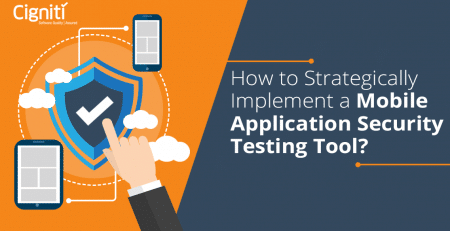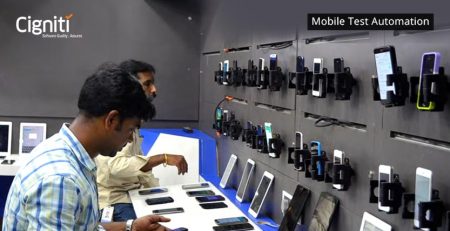Decoding Mobile App Testing: 7 Crucial Benefits of On-Premise Physical Devices versus Real Device Cloud Environments
|
Listen on the go!
|
In the dynamic space of mobile app development, testing methodologies play a pivotal role in ensuring the quality and functionality of applications across diverse devices and platforms. Traditionally, on-premise physical device testing has been the norm, offering unparalleled insights into real-world scenarios. However, real device cloud testing has revolutionized the landscape, providing newfound agility and scalability.
1. Real-world Simulation and User Experience Enhancement
On-premise physical device testing excels in replicating real-world environments, enabling testers to evaluate applications under various conditions such as network fluctuations, device malfunctions, and geographical settings. This facilitates a thorough user experience assessment, ensuring optimal performance across diverse scenarios. Similarly, real device cloud solutions offer the flexibility to conduct tests in real-time, allowing teams to simulate user interactions seamlessly and identify potential bottlenecks early in the development cycle.
2. Cross-platform Compatibility Assurance
The heterogeneous nature of the mobile landscape necessitates robust cross-platform testing to ensure consistent performance across different operating systems, versions, and devices. On-premise physical device testing empowers QA teams to validate applications across many devices, mitigating the risk of compatibility issues and enhancing market reach. Similarly, real device cloud platforms offer extensive libraries, enabling parallel testing across multiple configurations and accelerating the validation process.
3. Comprehensive Hardware Support
Physical devices boast many sensors and features, ranging from cameras and GPS modules to accelerometers and biometric scanners. Testing applications on real devices allows for in-depth scrutiny of hardware functionalities, ensuring seamless integration and optimal user experiences. Real device cloud environments offer access to diverse devices, enabling comprehensive hardware compatibility testing without costly device procurement and maintenance.
4. Usability Issue Identification
Detecting usability issues is paramount for delivering intuitive and user-friendly mobile applications. On-premise physical device testing provides a tactile approach to usability testing, allowing testers to assess factors such as responsiveness, intuitiveness, and accessibility firsthand. Real device cloud platforms facilitate collaborative usability testing, enabling teams to gather feedback from diverse stakeholders and iterate rapidly to enhance user satisfaction.
5. Efficient Bug Detection and Resolution
Rapid bug detection and resolution are imperative for product quality and accelerating time-to-market. On-premise physical device testing enables early identification of complexities and incompatibilities, empowering teams to address issues proactively and streamline the development process. Similarly, real device cloud solutions offer unparalleled scalability, enabling concurrent testing across numerous devices and expediting bug triaging and resolution.
6. Enhanced Collaboration and Accessibility
On-premise physical device testing often necessitates onsite coordination, limiting flexibility and accessibility for distributed teams. Real device cloud platforms transcend geographical barriers, enabling seamless collaboration and testing from anywhere with an internet connection. This fosters a remote work culture and facilitates efficient resource utilization, particularly in today’s remote-first work environments.
7. Cost Efficiency and Resource Optimization
Maintaining an in-house device lab can entail significant overhead costs, including procurement, maintenance, and infrastructure management. On-premise physical device testing requires substantial hardware and human resources investments, constraining budget allocations for other critical initiatives. Real device cloud solutions offer a cost-effective alternative, eliminating the need for upfront hardware investments and streamlining testing operations through pay-as-you-go pricing models.
Conclusion
Though challenges like high procurement costs, location-based barriers, and compatibility issues with on-premise testing may arise, leveraging physical devices for mobile app testing, real device cloud solutions present scalability and accessibility benefits. While on-premise testing may face hurdles in accommodating remote work and connecting devices to IDEs, real-device cloud testing offers flexibility and efficiency, offers unique advantages, and plays complementary roles in the mobile app testing ecosystem.
While on-premise testing provides granular control and real-world simulation, real-device cloud platforms offer unmatched scalability, accessibility, and cost efficiency. By leveraging the strengths of both approaches, organizations can ensure comprehensive test coverage, expedite time-to-market, and deliver exceptional mobile experiences to their users.
Cigniti Technology’s dedicated mobile device lab ensures quick time-to-market and robust test coverage. With a continuous integration environment, it aligns seamlessly with DevOps teams, enhancing efficiency. The lab prioritizes security, residing within the company’s VPN and featuring a demilitarized network area (DMZ). It supports various devices, OS versions, and network conditions, minimizing risks. Cigniti’s Mobile Device Lab streamlines testing processes, accelerating release cycles and improving product quality. Centralizing resources maximizes efficiency and enables comprehensive testing. With a focus on innovation and excellence, Cigniti drives advancements in mobile app testing services. Through cutting-edge technologies and stringent security measures, it ensures exceptional user experiences.
Need help? Contact our mobile testing experts to learn more about decoding Mobile App Testing and the crucial benefits of on-premise physical devices versus real device cloud environments.





Leave a Reply